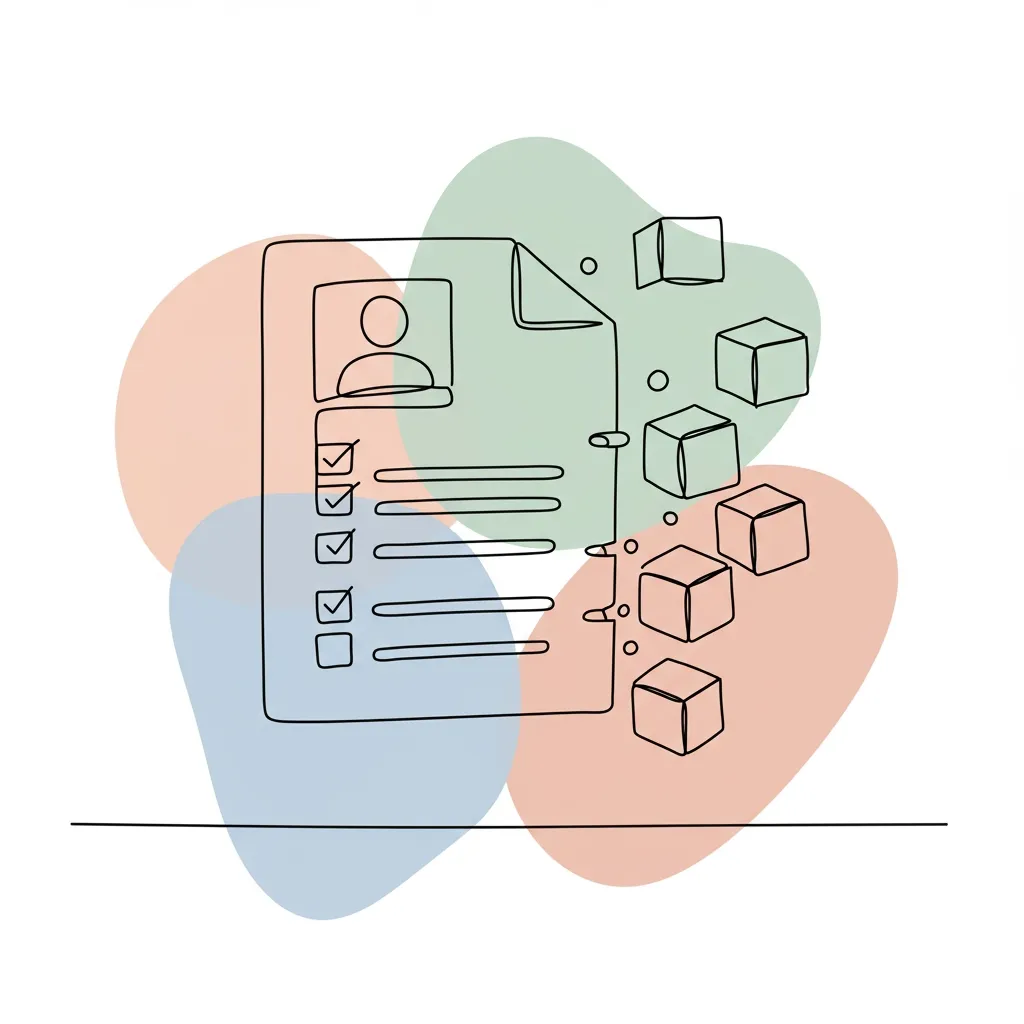Deconstructing a Job Description to Inform Your Resume Strategy

Deconstructing a Job Description to Inform Your Resume Strategy
Analyzing a job description is the single most critical step in creating a resume that gets results. This guide provides a strategic framework for deconstructing job postings to tailor your resume, pass Applicant Tracking Systems (ATS), and capture the attention of hiring managers, ultimately increasing your chances of landing an interview.
Why You Must Analyze Every Job Description
Submitting a generic, one-size-fits-all resume is one of the least effective job search strategies. Each role and company has unique needs, priorities, and language.
Tailoring your resume demonstrates to an employer that you have read the requirements, understand their needs, and are a deliberate and thoughtful candidate. It is a non-negotiable step in the modern job market.
The Two Audiences: ATS and Human Recruiters
Every tailored resume must appeal to two distinct audiences in a specific order. The first is the algorithm, and the second is the human.
Applicant Tracking System (ATS): Software used by over 90% of large companies to scan and rank job applications. It filters out candidates who don't match the job's core requirements by looking for specific keywords and phrases.
Human Recruiters/Hiring Managers: Once your resume passes the ATS, a person will read it. They are looking for context, achievements, and a clear narrative that proves you can solve their problems.
A Step-by-Step Guide to Deconstructing a Job Description
Follow this systematic process to extract the most important information from any job posting.
Isolate and Annotate: Copy the job description into a separate document or print it out. Use a highlighter to mark key phrases and responsibilities.
Separate "Must-Haves" from "Nice-to-Haves": Look for language like "required," "minimum qualifications," or "must have" versus "preferred," "plus," or "desired." Your resume must prominently feature the must-haves.
Categorize Requirements: Group the highlighted points into categories:
- Hard Skills: Specific, teachable abilities like "Python," "Salesforce," "SEO," or "Adobe Creative Suite."
- Soft Skills: Interpersonal attributes like "communication," "leadership," "teamwork," or "problem-solving."
- Experience & Qualifications: Years of experience, required degrees, or specific certifications.
Identify Company Values: Look for clues about the company culture in the "About Us" section or the tone of the description. Words like "fast-paced," "collaborative," or "innovative" can inform the tone of your resume.
Identifying and Integrating Keywords
Keywords are the bridge between your resume and the job description. Integrating them correctly is essential for passing the ATS scan.
Look for nouns and phrases that are repeated throughout the description, especially in the "Responsibilities" and "Qualifications" sections. These are often the exact terms the ATS is programmed to find.
Mirror the language of the job description where it authentically reflects your experience. If the role asks for "stakeholder management," use that exact phrase instead of "working with clients." This direct alignment is crucial for algorithmic success.
| Generic Bullet | Tailored Bullet (for a Project Manager Role) |
|---|---|
| Managed project from start to finish. | Led a cross-functional team of 5 to deliver a $50K software project on time and 10% under budget, using Agile methodologies. |
| Was responsible for marketing reports. | Analyzed campaign performance metrics using Google Analytics to provide actionable insights that increased lead conversion by 15%. |
Frequently Asked Questions
How do I know which keywords are most important?
The most important keywords are typically the hard skills and specific software or methodologies mentioned in the "Requirements" or "Must-Haves" section of the job description.
How do I address skill gaps on my resume?
Focus on your transferable skills. For example, if you lack direct experience in "project management" but have organized large events, highlight your skills in "coordination," "budgeting," and "vendor management." Acknowledge the need to upskill by pursuing certifications on platforms like Coursera.
Should I apply if I don't meet 100% of the qualifications?
Yes. Research from sources like LinkedIn's Talent Blog shows that you can be a strong candidate even if you only meet a majority of the requirements. If you meet the core "must-haves," you should consider applying.
How Cruit Supercharges Your Resume Strategy
The manual process of deconstructing job descriptions is time-consuming and prone to error. Cruit streamlines this entire workflow with its powerful, AI-driven suite of tools.
Cruit's Job Analysis Module instantly performs a deep analysis of any job description against your resume. It goes beyond simple keyword matching to give you a clear breakdown of "Matching Skills" and "Skill Gaps," providing invaluable insight into where you are most competitive.
The Resume Tailoring Module then acts as a collaborative AI assistant. It engages you in a natural conversation to address the identified gaps, helping you uncover and articulate relevant experiences you may have overlooked, ensuring your resume is perfectly optimized for both ATS and human readers.
This guide was created by Cruit, a career growth platform that helps professionals build and execute their career strategy.